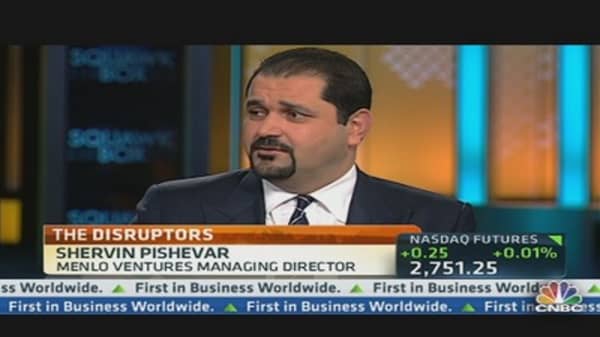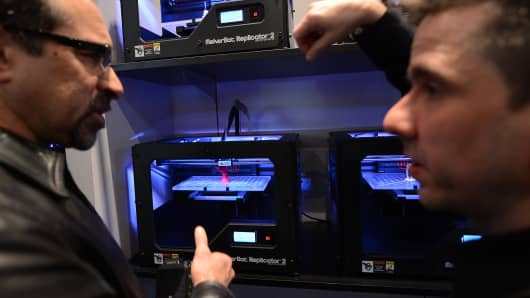The analysts likened these innovations to the sweeping changes that brought about the fall of Polaroid's instant camera business, and the rise of Wal-Mart. The Goldman analysts declined to be interviewed on their report.
As for E-cigarettes, sales have doubled in the last two years and are closing in on $1 billion, and Goldman says they are 99 percent less harmful than tobacco cigarettes, provide a similar experience and are cheaper.'"We estimate that e-cigs could reach $10 billion in sales over the next several years...and account for more than 10 percent of total tobacco industry volume" and 15 percent of the total profit pool by 2020, wrote analyst Judy Hong.
(Watch now: Are E-cigarettes smokin' hot?)
Lorillard is seen for now as the biggest beneficiary of the trend among big three tobacco companies since it purchased Blu e-cigs, a company that has 40 percent of the e-cig market. NJOY and Logic, both private e-cig companies, would be beneficiaries. While too soon to conclude, Altria could be the most at risk, due to its majority share of the cigarette profit pool and its ownership of top brand, Marlboro. Risks to this innovation could be changes in tax status or regulation, such as FDA oversight.
Cancer immunotherapy has broken out as the big story in pharma. Goldman analysts project it will be a $10 to $15 billion business by 2025 in melanoma, lung and renal cancer, but say that could be just the start. The drugs basically work by "re-training" the immune system to kill cancer, instead of traditional chemotherapy which sets out to stop cancer cells but also can damage other cells. They expect the drugs to be used in combination therapy.
(Read more: Cancer Immunotherapy the Top Focus at ASCO)
Bristol-Myers is the leader with phase three trials in three types of cancer and a one to two year lead on other drug makers, so it should be able to secure a large share of the market, the analysts noted. Merck has a mono-therapy therapy, PD-1, which shows strong early stage response, and it is looking to other immunotherapy agents to potentially partner with it, but Bristol has a significant lead, the analysts note.
Current cancer treatments could lose share if the initial data on the new therapies proves out. That would include Eli Lily's Alimta and Roche's Avastin, they noted.
Goldman analyst Brian Lee sees a bright future for LED lighting. LEDs have gone through several transformations, starting with the handsets in the early 2000s, moving on to TVs, and now progressing to general lighting. Lee writes that this is a multi-decade opportunity for a product that will have clear cost and energy savings advantages.
(Watch now: Cree Unveils $10 LED Light Bulb)
LEDs have a longer lifetime of 50,000 hours, and could have 80 percent penetration by 2025, he notes. Demand is now in the early stages but the general lighting market is large - $11 billion. LED is about five percent of the market and it is being driven by industrial and commercial demand. Goldman believes Cree is the most attractive play and it has a technology advantage. Taiwan-based Epistar is a key player in the Chinese LED market. Goldman is neutral on the stock but it could see EPS growth of near 40 percent in 2013/2014.
Risks include slower adaption of LED lighting in general, a new technology or positive developments in conventional lighting.







